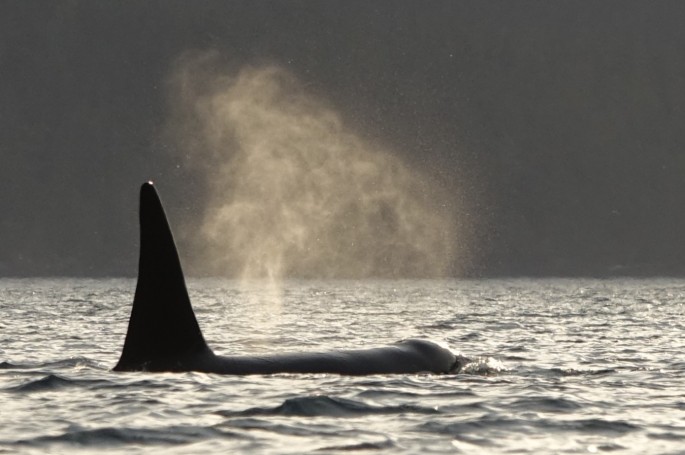
It is easier to do that thing with the camel, the needle and the eye than find a few hours of calm sea for wildlife-spotting-from-the-kayak over the last few months.
Even when the wind does briefly abate, there is enough residual swell from the last storm to make the kayak bounce around so much it could dislodge your fillings.
It’s complete and utter pants.
It’s not that a lumpy sea is particularly dangerous…in fact for many sea kayakers it is their preferred conditions…it just doesn’t suit my particular branch of the sport. I use a sit-on-top kayak with all my gear, including camera, stowed in dry bags on the deck.
Because I am always in a desperate rush to get on the water and these bags might not be sealed as securely as they should, I try to avoid too many waves sloshing over the deck. Water does have a habit of sneaking into the the most unexpected and unwelcome of places, as I found out in a dramatic and unpleasant manner a month ago.
I had clambered in to my drysuit in record time and everything seemed good to go…until I couldn’t locate my phone. I eventually found it in a zipped pocket of my gilet beneath my securely fastened drysuit. It was completely inaccessible should I need it in a hurry if the unthinkable happened…like somebody ringing me up.
The only way to extricate it without the enormous effort of taking off all my waterproof gear was to writhe an arm in through my relief zip and reach up to the zipped pocket. It was a manoeuvre of such contortion it would have got an approving nod from Houdini.
Camera rescued and returned to its usual pocket in my lifejacket…time to set off. Fast, to make up for lost time.
There was just one rogue swell to tackle as I was paddling out from the beach. It’s weird how the biggest wave of the day always happens to roll up just as I paddle out.
Whooosh! I am completely doused as the wave crashes over the deck, but all seems to be well. Half-a-second later all is definitely not all well. A gallon of freezing cold English Channel is sloshing around my rear end inside my suit, having gained unhindered entry via a gaping relief zip which I had forgotten to do up.
Idiot! My planned four hour trip around the bay will now be one of misery. Four hours of wet and cold underpants (if that is what they are still called) has the same effect on body temperature as an afternoon spent in a meat chiller. I have personal experience of this but I won’t explain as it’s a long story. Actually it’s quite short, but boring, unless you are in to the study of bacterial contamination of topside of beef.
Anyway, as expected, I was chilled to the marrow by the end of the trip.
So, where were we? Ah yes, calm spells have been few and far between. Even more irritatingly, the brief ridges of high pressure which pass over fleetingly have all happened during the night, so by dawn the wind is increasing again.
A couple of days ago I woke up early and as I was lying in bed slurping a cup of tea I watched the stars, and a couple of planets, being snuffed out by a curtain of cloud approaching from the west. The next storm was on the way.
The winds were forecast to stay light for only an hour or two after sunrise.
Long enough!…it was time to get one over on the weather!
I leaped out of bed and the rest of the tea went down the hatch like floodwater down a storm drain and I was off to the south coast at Torbay and heading out to sea. I hope the speed camera on the A30 wasn’t working.
There were just a couple of Gannets roving about and I watched them intently. If one circled, that’s where I was going. More often than not a circling Gannet indicates a feeding porpoise or a dolphin below.
Two Gannets circled and one dived so I ‘powered’ over to have a look…and was joined by a dozen juvenile dolphins…
Superb…even better, the sea was still smooth. But it didn’t last long as the first gusts soon arrived.
Will and Sam appeared in the distance and I did my best to lure the dolphins over to them with a bit of a burst of speed. This was only semi-successful (ie mainly unsuccessful) but they did get to enjoy a bit of dolphin action when they appeared upon the scene.

The increase in wave-chop made us head back towards the coast…giving us the chance to do a bit of kayak speliology. Caving is not really my thing but I am happy to have my arm twisted if it is in aid of a bit of a chuckle…
So the ultra-early start to beat the weather paid off:
Hopefully it won’t be pants…if that is what they are stilled called…for much longer.


















































































































































